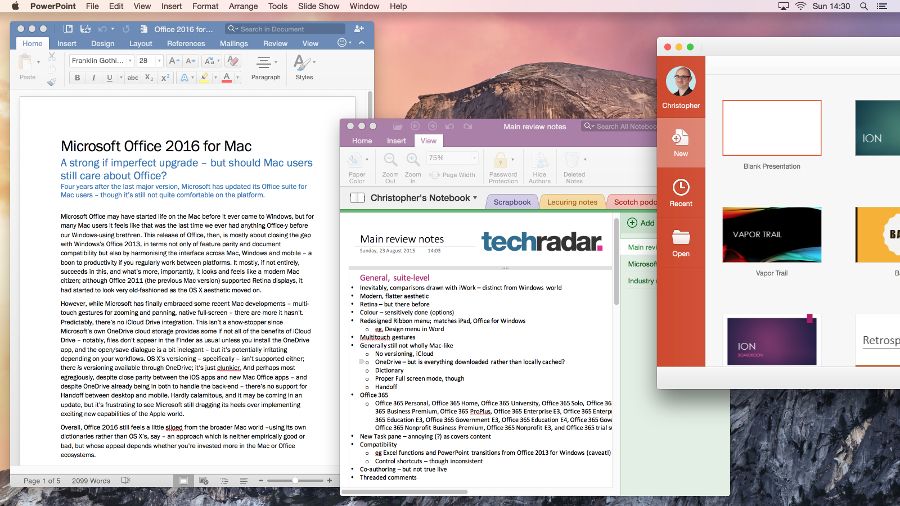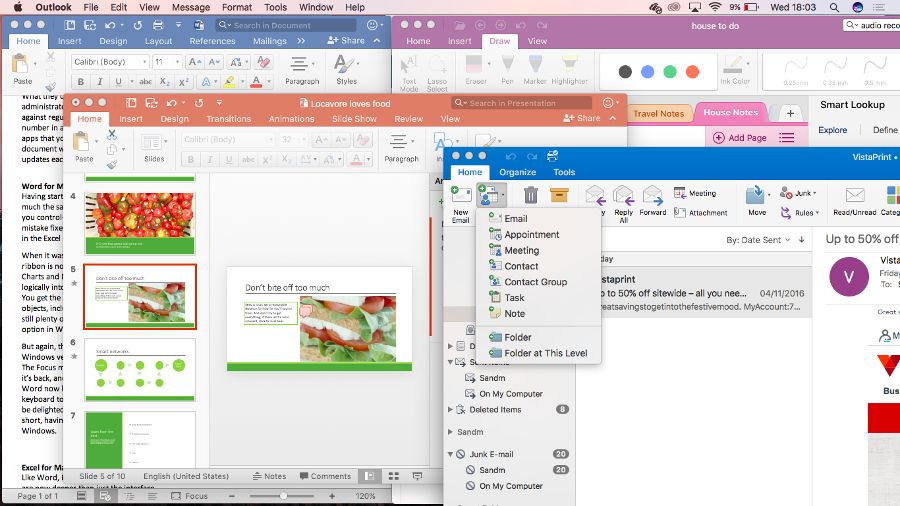Microsoft Excel For Mac 2019 Vs 2016
 -->
-->Applies to:Office for Mac, Office 2019 for Mac, Office 2016 for Mac
In an unusual move, Microsoft announced an update for both the Windows and Mac OS versions of Office simultaneously in late 2018. The new features in Office 2019 largely consist of those that have been issued as updates to the Office 365 subscription version of the product since the last big Office release in 2016.
Buy now for $149.99 One solution for you and your family across all your devices. Includes premium Office apps for up to 6 users on PC or Mac. One solution for you across all your devices. Includes premium Office apps for 1 user on PC or Mac. The essentials for individuals to get it all done. Excel 2016 for Windows introduced a powerful set of Get & Transform Data tools. These tools, based on Power Query technology, enable you to easily connect, combine, and shape data coming from a variety of sources. Today, we are excited to announce the first step in a journey to support Power Query in Excel for Mac. A few of the new features that are included in the Microsoft Office 2019 suite: Microsoft Office 2019 has new and improved inking features, such as pressure sensitivity. PowerPoint 2019 has new visualization features, such as Morph and Zoom. Excel 2019 has new formulas.
After Office for Mac is installed, users can configure settings for the apps. These settings are called preferences. As an admin, you might want to provide Office for Mac users in your organization with a standard set of preferences. For example, you can configure how often to check for software updates for Office for Mac - daily, weekly, or monthly.
Preferences for Office for Mac are stored in preference files. These files are often referred to as .plist files.
- Tech support scams are an industry-wide issue where scammers trick you into paying for unnecessary technical support services. You can help protect yourself from scammers by verifying that the contact is a Microsoft Agent or Microsoft Employee and that the phone number is an official Microsoft global customer service number.
- Microsoft Office 2019 is a standalone, local (not cloud-based, like Office 365) version of the Microsoft Office software suite. It is a “perpetual” release, which is just a fancy way of saying you buy the software once and own it forever, rather than having to pay an annual subscription fee to access it.

Important
Microsoft Excel For Mac 2019
There are changes in Office for Mac to improve security, including implementing Apple app sandboxing guidelines. These changes mean that you can't customize the app bundle before or after you deploy Office. But, preference files aren't part of the app bundle for an app, so you can make changes to these files.
Preference files are stored in the app container, which isn't the same thing as the app bundle. The app container is created the first time an app is run. The app container is located in the user's ~/Library/Containers folder. For example, the app container for Excel is named com.microsoft.Excel. Within the app container, the .plist file is located in the Data/Library/Preferences folder. For example, the .plist file for Excel is named com.microsoft.Excel.plist.
The best way to add or edit preferences is by using the defaults command. For example, if you want to configure updates to be checked manually, you can open Terminal and enter the following command:
You can take an existing .plist file and modify it with your organization's preferences. In some cases, you can actually copy that .plist file to other computers in your organization that have Office for Mac installed. But that doesn't work in the case of all .plist files. Therefore, the preferred method is to create a script that incorporates all the defaults commands that you want to use to set preferences. Then deploy that script to your users. The script needs to be run in the user's context, because preferences are user specific. That also means that if several users share the same computer and each has a different login account, then the script needs to be run for each user of that computer.
Depending on which preferences you're configuring and how you deploy those preferences, the user might need to quit all Office apps and restart the computer for the preferences to take effect. Also, remember that the preferences you deploy might overwrite existing preference settings configured by the user.
Note
Office for Mac 2011, which is no longer supported, also used preference files. There are some preferences in common between Office for Mac and Office for Mac 2011. Therefore, if you install Office for Mac on a computer that has Office for Mac 2011 installed, Office for Mac will automatically inherit some preference settings from the Office for Mac 2011 installation.
Related topics
Today, we are announcing the general availability of Office 2019 for Windows and Mac. Office 2019 is the next on-premises version of Word, Excel, PowerPoint, Outlook, Project, Visio, Access, and Publisher.
Get more with Office 365 ProPlus
What's New In Excel 2019 For Mac
Office 365 ProPlus is the most productive and most secure Office experience for enterprises.
Learn moreOffice 365 ProPlus, the cloud-connected version of Office, delivers the most productive and most secure Office experience—with the lowest total cost of ownership for deployment and management. However, for customers who aren’t ready for the cloud, Office 2019 provides new features and updates to the on-premises apps for both users and IT professionals. Like Windows Long Term Servicing Channel (LTSC) releases, Office 2019 provides a set of valuable enhancements for customers who can’t be cloud-connected or receive regular updates.
The new enhancements in Office 2019 are a subset of a long list of features that have been added to Office 365 ProPlus over the last three years. Office 2019 is a one-time release and won’t receive future feature updates. However, we’ll continue to add new features to Office 365 ProPlus monthly, including innovations in collaboration, artificial intelligence (AI), security, and more.
Office 2019 delivers features across apps to help users create amazing content in less time. In PowerPoint 2019, you can create cinematic presentations with new features like Morph and Zoom. And improved inking features across the apps in Windows—like the roaming pencil case, pressure sensitivity, and tilt effects—allow you to naturally create documents.
Excel 2019 adds powerful new data analysis features, including new formulas and charts and enhancements to PowerPivot.
Mac microsoft word auto recovery file extension. Recover text from a damaged file in Word. On the Word menu, click Preferences. Under Authoring and Proofing Tools, click General. Make sure that the Confirm file format conversion at Open check box is selected, and then close the General dialog box. Click File, Open. On the Open menu towards.
Word 2019 and Outlook 2019 help you focus on what matters most. Learning Tools, like Read Aloud and Text Spacing, make it easier to engage with your content. Focus Mode blocks out distractions and puts your content front and center. And Focused Inbox moves less important emails out of the way—so you can get straight to taking care of business. For a longer list of the new features in Office 2019, see our FAQs.
Office 2019 also includes new IT value for enhanced security and streamlined administration. We introduced Click-to-Run (C2R), a modern deployment technology, in Office 2013, and it’s now used to deploy and update Office across hundreds of millions of devices worldwide. With Office 2019, we’re moving the on-premises versions of Office to C2R to reduce costs and improve security. The advantages of C2R include predictable monthly security updates, up-to-date apps on installation, reduced network consumption through Windows 10 download optimization technology, and an easy upgrade path to Office 365 ProPlus. C2R offers the same enterprise-focused management capabilities as Microsoft Installer (MSI) based products and will also support an in-place upgrade when you move to Office 2019 from older MSI-based products. To learn more, refer to the Office 2019 Click-to-Run FAQ.
The 2019 release of Office products also includes updates to our servers, and in the coming weeks, we will release Exchange Server 2019, Skype for Business Server 2019, SharePoint Server 2019, and Project Server 2019.
Office 2019 is a valuable update for customers who aren’t yet ready for the cloud. And each time we release a new on-premises version of Office, customers ask us if this will be our last. We’re pleased to confirm that we’re committed to another on-premises release in the future. While the cloud offers real benefits in productivity, security, and total cost of ownership, we recognize that each customer is at a different point in their adoption of cloud services. We see the on-premises version of Office as an important part of our commitment to give customers the flexibility they need to move to the cloud at their own pace.
Availability
- Commercial volume-licensed (trusted) customers can access Office 2019 starting today.
- Office 2019 is now available for consumer and commercial customers. For consumer customers in China, India, and Japan, Office 2019 suites will be available in the next few months.
- Certain features are only available in the Mac or Windows versions of Office 2019. For details, see the FAQ.